EXPERIENCE OVERVIEW

Cut off from mainland Africa, Madagascar is a dream come true for intrepid explorers. Understandably, the wildlife is the main draw (much of it found nowhere else on Earth) and it’s the animals, and particularly lemurs, that take centre stage on this trip. Accompanied by experienced local trackers, we visit Andasibe in search of the indri, the largest lemur, and the cloud forest of Ranomafana National Park to look for rare golden and greater bamboo lemurs. We also search for ring-tailed lemurs in Anja Reserve and have a final day wildlife-watching in Tsimanampetsotsa National Park.
Profile
â€10 nights in comfortable hotels and 3 nights in simple hotels â€Travel by private bus, boat and internal flight â€Some long drives on poor roads
At a Glance
â€10 nights in comfortable hotels and 3 nights in simple hotels â€Travel by private bus, boat and internal flight â€Some long drives on poor roads
Trip For You
This trip is rated Activity Level 2 (Leisurely/Moderate) with a Wildlife Rating of Three. Visit our Activity Level Guidelines page for more on our trip gradings or our Wildlife Holidays page for more on our Wildlife Ratings.
Madagascar is a rewarding destination with a wealth of flora and fauna; however, before you decide to travel, we would like to highlight the following issues for you to consider:
Madagascar is one of the poorest countries in the world and the infrastructure reflects this.Travelling by vehicle in Madagascar can be uncomfortable as road conditions are far worse than in Europe and North America. You should expect many narrow, winding and uneven sections of road. Roads away from the population centers and main routes are generally unpaved dirt roads which can be very bumpy.We do have some longer drives but the diverse scenery more than makes up for time spent on the bus. We break up our road journeys with stops at villages to take photos and stretch our legs.There will be a lot of very early starts and long days on this itinerary.For the best wildlife viewing opportunities there will be some early starts and tracking the wildlife can involve walking through difficult terrain at a quick pace.Parts of Madagascar are mountainous. You need to be prepared to walk in hills for up to four hours. The trails are fairly gentle in Andasibe but steeper in all the other national parks.The tourist infrastructure in Madagascar is new and some services are limited. It is not unusual for there to be changes to accommodation or internal flights and for this reason the order of the itinerary (but not the content) may sometimes change. However, what tourism does exist is of a good standard and you may be impressed by the level of service in some of the places we stay.Our boat transfer to Anakao involves a beach landing and walking through some water that might may be difficult if you have limited agility.
This itinerary includes the use of pontoon ferries, which do not (typically) offer emergency safety equipment such as flotation devices. We have risk assessed these crossings and find them to be low risk. However, if you are concerned about this aspect, please consider an alternative trip as we are unable to facilitate the provision of Western safety equipment.
Eating Drinking
Food standards in Madagascar can vary and are probably not of the same standard you are used to at home. The cuisine has been strongly influenced by the French and a three-course meal should cost 43,000-70,000 ariary (US$10-US$16). A one-course lunch should cost (US$4.40-US$7.60). Please allow approximately 1.4m ariary (US$325) for the meals not included, plus a little more if you enjoy a drink with dinner. Malagasy lager is reasonably priced and easily available. Malagasy wine is also reasonably priced but is not to everyone’s taste. It is sometimes possible to get hold of French or South African wine. A delicacy in Madagascar is flavoured rums, which are widely sold and very reasonably priced.
Vegetarians and vegans can be well catered for on this trip – please inform us before departure of any dietary requests so our local team can be well prepared.
Transportation
Travel is mainly by small private bus. Road conditions are far worse than in Europe and North America and you should expect many narrow, winding and uneven sections. Many of the roads away from the population centers and main routes are unpaved dirt roads which can be very bumpy. There are several days where the drives are long, with a maximum drive time of approximately 11 hours, but we make plenty of stops along the way.
There is one internal flight: from Tulear to Tana. There is also a round-trip boat transfer between Tulear and Anakao and a 4×4 transfer to Tsimanampetsotsa National Park. We use 4×4 vehicles on this section of the trip as the road is a dirt road and can be a little uneven at times (though the surrounding landscape and destination more than make up for it).
The driving distances are as follows. Approximate driving time including stops in brackets:
Antananarivo to Andasibe: 84mi/135km (five hours)Antananarivo to Antsirabe: 105mi/169km (six hours)Antsirabe to Ranomafana : 155mi/250km (10 hours)Ranomafana to Fianarantsoa to Ranohira: 230mi/370km (11 hours)Ranohira to Tulear: 149mi/240km (five hours)
Joining Instructions
Key information
Start hotel: Hotel Belvedere, Antananarivo
Recommended arrival time: You can arrive at any time today. There will be a welcome briefing in the evening, but if you miss it the leader will update you separately
Getting to the start hotel
Exodus provides free arrival transfers to the start hotel from the airport for all customers. If you would like further information on joining this trip, please speak to your sales representative.
Catching your return flight
Exodus provides free departure transfers for all customers from the end hotel.
Please note, unless specified otherwise, the transfers will be to the start (or pre-tour) hotel and from the end (or post-tour) hotel and will be on the date on which the tour starts/ends; transfers to other hotels in the same city and/or on different dates may attract an extra charge. Transfers should be booked with your sales representative at least two weeks before the tour starts.
Transfer Details
Free transfers
Exodus offers FREE airport arrival and departure transfers on any flight for this trip. Unless specified otherwise, the transfer will be to the Exodus start (or pre-tour) hotel and from the end (or post-tour) hotel; transfers to other hotels in the same city and/or on different dates may attract an extra charge. Transfers may be shared with other Exodus customers on the same flight, or on a flight with similar arrival times. All those taking advantage of the free airport transfers must provide full flight details for both arrival and departure in advance.
Flights
Remember, flights aren’t automatically included in your trip. If you’d like Exodus to help you find some good options, give us a call on 020 8772 3837.
Weather Information
Madagascar has a tropical climate with two seasons: rainy and dry. The driest season extends from April to October. It can be cold on the central plateau (including Antananarivo) in the evenings, and in the rainforest areas, so bring warm clothes (fleece and waterproof). There is considerable regional variation but coastal areas will normally be very hot and dry. Expect daytime temperatures in the shade up to 38C (100F) from October to December and up to 30C (86F) during the trips running from April to June and September.
Spending Money
A Visa or Mastercard can be used to obtain local cash at some banks, but we advise you to bring your spending money in euros or US dollars cash as these are easiest to change to local currency. Bills of €100 or US$100 usually get a better rate than bills of 20 or less. British pounds can only be exchanged at banks at the airport, but even there, they are not always accepted. You can bring a maximum of €7,500 or the corresponding amount in another currency without declaring it on arrival. Above that amount, you have to declare it. Please note, you can import and export a maximum of 400,000 ariary. You cannot rely on credit cards for payment as they are rarely accepted and the ATMs do not always work; American Express or Diners cards are also rarely accepted in Madagascar.
All money should be exchanged at the airport on arrival, as the banks in the provincial towns take a long time to process. Also, the exchange rate at the airport is generally better than in the banks in Antananarivo or other cities.
Optional excursions
Antananarivo:
Visit to Lemurs’ Park near Tana:
â€210,000 ariary (US$49) for one person â€140,000 ariary (US$32.50) per person for two people â€105,000 ariary (US$24.30) per person for three people â€95,000 ariary (US$22) per person from four people
Visit Tsimbazaza Zoo and Botanical Gardens near Tana:
â€175,000 ariary (US$40.50) for one person â€112,000 ariary (US$25.90) per person for two people â€95,000 ariary (US$22) per person for three people â€80,000 ariary (US$18.50) per person from four people
Anakao:
â€Scuba diving single dive: Approximately 235,000 ariary (US$54) per person â€Scuba diving night dive: Approximately 330,000 ariary (US$76) per person â€Whale-watching excursion (July to September): Approximately 117,000 ariary (US$27) per person â€Kite surfing: Approximately 235,000 ariary (US$54) per person, per hour â€Surfing: Approximately 280,000 ariary (US$65) per person for three hours â€Stand-up paddleboarding: Approximately 95,000 ariary (US$22) per person, per hour
Tipping
Our local staff are paid well and fairly for their work. You may feel your leader has performed well and want to show your appreciation of their services. If you would like to tip your leader, we suggest a figure of approximately 22,000 ariary (US$5) per person per day.
It is also courtesy to tip any extra guides/drivers you may have over the course of the trip, though certainly not compulsory. Shortly after arrival, the leader will suggest to the group that they donate a sum of approximately 282,000 ariary (US$65) per person towards a kitty on arrival. This money is then used for tipping local guides, hotel porters, drivers etc and will be distributed by the leader.
highlights
- Join experienced local trackers for the best encounters with lemurs in their natural habitats
- Marvel at the amazing rock formations, spectacular canyons and natural swimming holes of Isalo National Park
- See unique wildlife in the Andasibe Nature Reserve and in Ranamofana National Park
- Discover the striking spiny forest in Tsimanampetsotsa National Park
- Relax on the beach in the coastal town of Anakao and explore the small island of Nosy Ve

Highlights
- Join experienced local trackers for the best encounters with lemurs in their natural habitats
- Marvel at the amazing rock formations, spectacular canyons and natural swimming holes of Isalo National Park
- See unique wildlife in the Andasibe Nature Reserve and in Ranamofana National Park
- Discover the striking spiny forest in Tsimanampetsotsa National Park
- Relax on the beach in the coastal town of Anakao and explore the small island of Nosy Ve
Cut off from mainland Africa, Madagascar is a dream come true for intrepid explorers. Understandably, the wildlife is the main draw (much of it found nowhere else on Earth) and it’s the animals, and particularly lemurs, that take centre stage on this trip. Accompanied by experienced local trackers, we visit Andasibe in search of the indri, the largest lemur, and the cloud forest of Ranomafana National Park to look for rare golden and greater bamboo lemurs. We also search for ring-tailed lemurs in Anja Reserve and have a final day wildlife-watching in Tsimanampetsotsa National Park.
Profileâ€10 nights in comfortable hotels and 3 nights in simple hotels â€Travel by private bus, boat and internal flight â€Some long drives on poor roads
At a Glanceâ€10 nights in comfortable hotels and 3 nights in simple hotels â€Travel by private bus, boat and internal flight â€Some long drives on poor roads
Trip For YouThis trip is rated Activity Level 2 (Leisurely/Moderate) with a Wildlife Rating of Three. Visit our Activity Level Guidelines page for more on our trip gradings or our Wildlife Holidays page for more on our Wildlife Ratings.
Madagascar is a rewarding destination with a wealth of flora and fauna; however, before you decide to travel, we would like to highlight the following issues for you to consider:
Madagascar is one of the poorest countries in the world and the infrastructure reflects this.Travelling by vehicle in Madagascar can be uncomfortable as road conditions are far worse than in Europe and North America. You should expect many narrow, winding and uneven sections of road. Roads away from the population centers and main routes are generally unpaved dirt roads which can be very bumpy.We do have some longer drives but the diverse scenery more than makes up for time spent on the bus. We break up our road journeys with stops at villages to take photos and stretch our legs.There will be a lot of very early starts and long days on this itinerary.For the best wildlife viewing opportunities there will be some early starts and tracking the wildlife can involve walking through difficult terrain at a quick pace.Parts of Madagascar are mountainous. You need to be prepared to walk in hills for up to four hours. The trails are fairly gentle in Andasibe but steeper in all the other national parks.The tourist infrastructure in Madagascar is new and some services are limited. It is not unusual for there to be changes to accommodation or internal flights and for this reason the order of the itinerary (but not the content) may sometimes change. However, what tourism does exist is of a good standard and you may be impressed by the level of service in some of the places we stay.Our boat transfer to Anakao involves a beach landing and walking through some water that might may be difficult if you have limited agility.
This itinerary includes the use of pontoon ferries, which do not (typically) offer emergency safety equipment such as flotation devices. We have risk assessed these crossings and find them to be low risk. However, if you are concerned about this aspect, please consider an alternative trip as we are unable to facilitate the provision of Western safety equipment.
Eating DrinkingFood standards in Madagascar can vary and are probably not of the same standard you are used to at home. The cuisine has been strongly influenced by the French and a three-course meal should cost 43,000-70,000 ariary (US$10-US$16). A one-course lunch should cost (US$4.40-US$7.60). Please allow approximately 1.4m ariary (US$325) for the meals not included, plus a little more if you enjoy a drink with dinner. Malagasy lager is reasonably priced and easily available. Malagasy wine is also reasonably priced but is not to everyone’s taste. It is sometimes possible to get hold of French or South African wine. A delicacy in Madagascar is flavoured rums, which are widely sold and very reasonably priced.
Vegetarians and vegans can be well catered for on this trip – please inform us before departure of any dietary requests so our local team can be well prepared.
TransportationTravel is mainly by small private bus. Road conditions are far worse than in Europe and North America and you should expect many narrow, winding and uneven sections. Many of the roads away from the population centers and main routes are unpaved dirt roads which can be very bumpy. There are several days where the drives are long, with a maximum drive time of approximately 11 hours, but we make plenty of stops along the way.
There is one internal flight: from Tulear to Tana. There is also a round-trip boat transfer between Tulear and Anakao and a 4×4 transfer to Tsimanampetsotsa National Park. We use 4×4 vehicles on this section of the trip as the road is a dirt road and can be a little uneven at times (though the surrounding landscape and destination more than make up for it).
The driving distances are as follows. Approximate driving time including stops in brackets:
Antananarivo to Andasibe: 84mi/135km (five hours)Antananarivo to Antsirabe: 105mi/169km (six hours)Antsirabe to Ranomafana : 155mi/250km (10 hours)Ranomafana to Fianarantsoa to Ranohira: 230mi/370km (11 hours)Ranohira to Tulear: 149mi/240km (five hours)
Joining InstructionsKey information
Start hotel: Hotel Belvedere, Antananarivo
Recommended arrival time: You can arrive at any time today. There will be a welcome briefing in the evening, but if you miss it the leader will update you separately
Getting to the start hotel
Exodus provides free arrival transfers to the start hotel from the airport for all customers. If you would like further information on joining this trip, please speak to your sales representative.
Catching your return flight
Exodus provides free departure transfers for all customers from the end hotel.
Please note, unless specified otherwise, the transfers will be to the start (or pre-tour) hotel and from the end (or post-tour) hotel and will be on the date on which the tour starts/ends; transfers to other hotels in the same city and/or on different dates may attract an extra charge. Transfers should be booked with your sales representative at least two weeks before the tour starts.
Transfer DetailsFree transfers
Exodus offers FREE airport arrival and departure transfers on any flight for this trip. Unless specified otherwise, the transfer will be to the Exodus start (or pre-tour) hotel and from the end (or post-tour) hotel; transfers to other hotels in the same city and/or on different dates may attract an extra charge. Transfers may be shared with other Exodus customers on the same flight, or on a flight with similar arrival times. All those taking advantage of the free airport transfers must provide full flight details for both arrival and departure in advance.
Flights
Remember, flights aren’t automatically included in your trip. If you’d like Exodus to help you find some good options, give us a call on 020 8772 3837.
Weather InformationMadagascar has a tropical climate with two seasons: rainy and dry. The driest season extends from April to October. It can be cold on the central plateau (including Antananarivo) in the evenings, and in the rainforest areas, so bring warm clothes (fleece and waterproof). There is considerable regional variation but coastal areas will normally be very hot and dry. Expect daytime temperatures in the shade up to 38C (100F) from October to December and up to 30C (86F) during the trips running from April to June and September.
Spending MoneyA Visa or Mastercard can be used to obtain local cash at some banks, but we advise you to bring your spending money in euros or US dollars cash as these are easiest to change to local currency. Bills of €100 or US$100 usually get a better rate than bills of 20 or less. British pounds can only be exchanged at banks at the airport, but even there, they are not always accepted. You can bring a maximum of €7,500 or the corresponding amount in another currency without declaring it on arrival. Above that amount, you have to declare it. Please note, you can import and export a maximum of 400,000 ariary. You cannot rely on credit cards for payment as they are rarely accepted and the ATMs do not always work; American Express or Diners cards are also rarely accepted in Madagascar.
All money should be exchanged at the airport on arrival, as the banks in the provincial towns take a long time to process. Also, the exchange rate at the airport is generally better than in the banks in Antananarivo or other cities.
Optional excursions
Antananarivo:
Visit to Lemurs’ Park near Tana:
â€210,000 ariary (US$49) for one person â€140,000 ariary (US$32.50) per person for two people â€105,000 ariary (US$24.30) per person for three people â€95,000 ariary (US$22) per person from four people
Visit Tsimbazaza Zoo and Botanical Gardens near Tana:
â€175,000 ariary (US$40.50) for one person â€112,000 ariary (US$25.90) per person for two people â€95,000 ariary (US$22) per person for three people â€80,000 ariary (US$18.50) per person from four people
Anakao:
â€Scuba diving single dive: Approximately 235,000 ariary (US$54) per person â€Scuba diving night dive: Approximately 330,000 ariary (US$76) per person â€Whale-watching excursion (July to September): Approximately 117,000 ariary (US$27) per person â€Kite surfing: Approximately 235,000 ariary (US$54) per person, per hour â€Surfing: Approximately 280,000 ariary (US$65) per person for three hours â€Stand-up paddleboarding: Approximately 95,000 ariary (US$22) per person, per hour
TippingOur local staff are paid well and fairly for their work. You may feel your leader has performed well and want to show your appreciation of their services. If you would like to tip your leader, we suggest a figure of approximately 22,000 ariary (US$5) per person per day.
It is also courtesy to tip any extra guides/drivers you may have over the course of the trip, though certainly not compulsory. Shortly after arrival, the leader will suggest to the group that they donate a sum of approximately 282,000 ariary (US$65) per person towards a kitty on arrival. This money is then used for tipping local guides, hotel porters, drivers etc and will be distributed by the leader.
ITINERARY

1Day 1: Start Antananarivo
Our adventure starts in Antananarivo, the picturesque capital of Madagascar, which is often shortened to Tana. There will be a group meeting and briefing in the evening followed by an optional group dinner for those who would like to join.
Accommodation: Hotel Belvedere (or similar)
2Day 2: Antananarivo city tour; drive to Andasibe
This morning, we embark on a city tour of the capital. With busy markets, friendly people and an ancient town on a hill with freestone churches and ancient royal places, it is a magnificent place to explore. We then drive to Andasibe through the green vegetation of the east. This first stop brings us to the humid part of the country with many primary forests and lakes. Along the way, we see Merina villages in the rocky mountains. We arrive in Andasibe around 4pm and the rest of the afternoon is free to relax. In the early evening, we take a twilight/nocturnal walk along the road, close to the Andasibe Nature Reserve, looking for the nocturnal species of lemur as the torchlights pass their eyes.
Accommodation: Hotel Feon’ny Ala (or similar)
3Day 3: Morning trek in Andasibe National Park and afternoon visit to Vondron’olona Miaro Mitia Ala Reserve
Discover Andasibe National Park (also known as Perinet) and its wildlife on a four-hour walk. Expert trackers work with our leader to provide the best opportunities for wildlife viewing. The park is home to the teddy bear-like indri, the largest of the lemur species in Madagascar, as well as other flora and fauna and a wide array of birdlife. Listening to the piercing yet melancholy cry of the indri in the morning is an evocative sound and for those who are prepared to follow them through the thick rainforest, the reward is often a close-up view of these beautiful creatures. A group of five diademed sifaka has recently been reintroduced to Andasibe from Mantadia; if we are lucky, we may spot one of these unusual creatures.
In the afternoon, we visit the Vondron’olona Miaro Mitia Ala Reserve, a community-run reserve where we can see several species of lemurs and birds. The reserve is an untouched paradise for endemic animals and plants. There are groups of indris, which we hope to see in their natural habitat, and their white-headed relatives, the diademed sifakas, jump between the treetops. For reptiles and amphibian lovers, the reserve is home to countless frogs along the crystal-clear river and several amazing chameleons live in the forest.
Accommodation: Hotel Feon’ny Ala (or similar)
4Day 4: Return to Antananarivo; continue to Antsirabe
We drive back to Tana, and head south to Antsirabe, across the highland landscape of beautiful rice fields. The spectacular eroded hills called lavaka remind us of the Far East with rice fields and a green landscape or vegetables and fruit trees.
Antsirabe, or the Place of Salt, is a city known as the centre of the beer industry. Founded by Norwegians in 1856, it is the only place in Madagascar that really feels and looks like a European city. It has a temperate climate and all fruits and vegetable that grow in cold climates are found here.
Accommodation: Les Chambres du Voyageur (or similar)
5Day 5: To Ranomafana
After breakfast, we drive for approximately 12 hours to Ambositra, the centre of the wood-carving industry in Madagascar. We are still in the highlands, where the houses are decorated with ornately carved wooden balconies and brightly coloured shutters. Further on we pass le col de tapia, a type of tree resistant to the bush fires of the area. The landscape is still dominated by rice fields, pine forests and eucalyptus trees, and rocky mountains. Our destination for the day: Ranomafana National Park.
Accommodation: Centrest Hotel (or similar)
6Day 6: Full day in Ranomafana National Park
Parc National de Ranomafana, with rainforest hills and abundant wildlife, has long been considered one of the highlights in Madagascar, and is one of the most heavily visited national parks here. The entrance is about 4mi (7km) from Ranomafana village, while altitudes in the park range from 2,625ft to 3,940ft (800m to 1,200m). In addition to densely forested hills, the terrain here is characterised by numerous small streams, which plummet down to the beautiful Namorona River. Although much of the region has been logged, the easternmost part of the park retains relatively large areas of primary forest.
We walk in the park for approximately five hours looking for lemurs, chameleons and other animals. As we track the wildlife for the best viewing opportunities, the walk has the potential to be challenging if we need to walk at a quick pace through the forest. We hope to see golden bamboo lemurs, which are unique to this park, plus other lemurs such as eastern woolly lemurs, red-bellied lemurs, grey bamboo lemurs, and red-fronted brown lemurs. This park is also home to other mammals including tenrecs, bats and carnivores such as mongooses and the Malagasy striped civets.
Accommodation: Centrest Hotel (or similar)
7Day 7: Drive to Ranohira, visiting Anja National Park en route
We have an early start as we leave Ranomafana National Park. The scenery changes dramatically as we head to the small town of Ranohira, a journey of approximately nine hours. We stop near Ambalavao to visit Anja National Park along the way, a small reserve where several families of ring-tailed lemurs can be seen among the vegetation.
Accommodation: Orchidee de l’Isalo (or similar)
8Day 8: Full-day trek in Isalo National Park visiting Monkey Canyon and natural swimming pools
After an early start, we spend our day exploring Isalo National Park, a vast region of wind-polished and water-scoured rock towers, deep canyons, gorges and oases often described as Eden. If the conditions are right, we walk in the magnificent Canyon des Makis in search of cheeky ring-tailed lemurs and the Verreaux's sifaka. We also visit the Piscine Naturelle (Natural Swimming Pool), a beautifully lush spot in such an arid landscape where we can swim and relax. The combination of coloured rock formations, strange plants and enveloping silence make this one of the most captivating places in Madagascar.
Accommodation: Orchidee de l’Isalo (or similar)
9Day 9: To Tulear, visiting Zombitse National Park en route
After breakfast, we continue to Tulear. This brings us new scenery, among the dry forests of the west and the spiny desert of the south. On the way, admire the different Mahafaly tombs and the Antandroy tombs from the road and visit Zombitse National Park for a few hours. The Zombitse National Park forest is of particular interest to birdwatchers, as it is home to one of Madagascar's rarest endemics, Appert's greenbul, as well as other species such as giant coua, crested ibis and cuckoo roller. Verreaux's sifakas, red-fronted brown lemurs and sportive lemurs are also seen here.
Accommodation: Hotel Victory (or similar)
10Day 10: Boat transfer to Anakao; free day for optional activities
This morning, we take a boat transfer to Anakao arriving at around 9am. This Vezo (meaning the people who fish) fishing village lies on the southwest coast of Madagascar and has white-sand beaches. The rest of the day is free for optional activities, including snorkelling, diving, pirogue (a small boat similar to a canoe) excursions, swimming and more.
Accommodation: : Prince Anakao (or similar)
11Day 11: Full day in Tsimanampetsotsa National Park
An early 4x4 transfer (approximately two hours) takes us to Tsimanampetsotsa for a full day in the national park. A large, shallow soda lake is the standout feature here, while a large limestone plateau has some of the most striking spiny forest vegetation in Madagascar with countless endemic species. The park sits on a large underground aquifer that runs north, evidenced by numerous sinkholes and caves. The lake is renowned for its waterfowl, notably flamingos and other rare endemic birds including the Madagascar plover. We may even be lucky and spot the emblem of the park, the very rare Grandidier’s mongoose. In the late afternoon, we return to Anakao.
Accommodation: : Prince Anakao (or similar)
12Day 12: Excursion to Nosy Ve to see red-tailed tropic birds nesting on this small island
Today, we take a boat excursion to the small island of Nosy Ve to see red-tailed tropic birds (white seabirds with red bills and long, thin, red tails). If we are lucky, we may see the females roosting under small shrubs, well hidden from airborne predators such as hawks or eagles. A stroll around the shoreline, including a long white-sand beach, takes about one hour. After our exploration, we return to Anakao, usually around lunchtime. The rest of the afternoon is free for optional activities.
Accommodation: : Prince Anakao (or similar)
13Day 13: Fly to Antananarivo
Today, we transfer to Tulear airport for our flight to Antananarivo. Depending on the flight schedule, you may have free time in the afternoon to explore Tana on your own.
Accommodation: Belvedere Hotel (or similar)
14Day 14: Visit to Ambohimanga; end Antananarivo
This morning we visit Ambohimanga, the fortified village and its royal palace. Ambohimanga, otherwise known as Blue Hills, was for a long time forbidden to Europeans. The kings and queens returned to this hilltop village for rest and relaxation. From here began the line of kings and queens who united Madagascar into one country. Ambohimanga remains spiritually significant for the Malagasy people with ceremonies and rituals still taking place. Our adventure ends after Ambohimanga.
Please note: Clients must not book flights leaving before 2.30pm.
Day 1: Start Antananarivo
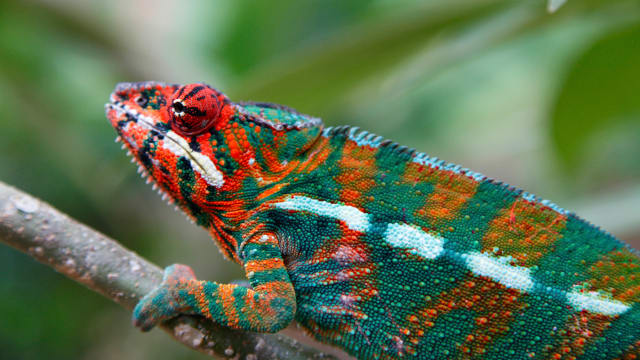
Our adventure starts in Antananarivo, the picturesque capital of Madagascar, which is often shortened to Tana. There will be a group meeting and briefing in the evening followed by an optional group dinner for those who would like to join.
Accommodation: Hotel Belvedere (or similar)
Day 2: Antananarivo city tour; drive to Andasibe
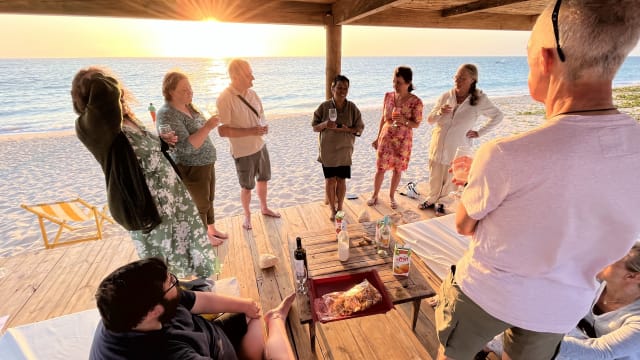
This morning, we embark on a city tour of the capital. With busy markets, friendly people and an ancient town on a hill with freestone churches and ancient royal places, it is a magnificent place to explore. We then drive to Andasibe through the green vegetation of the east. This first stop brings us to the humid part of the country with many primary forests and lakes. Along the way, we see Merina villages in the rocky mountains. We arrive in Andasibe around 4pm and the rest of the afternoon is free to relax. In the early evening, we take a twilight/nocturnal walk along the road, close to the Andasibe Nature Reserve, looking for the nocturnal species of lemur as the torchlights pass their eyes.
Accommodation: Hotel Feon’ny Ala (or similar)
Day 3: Morning trek in Andasibe National Park and afternoon visit to Vondron’olona Miaro Mitia Ala Reserve
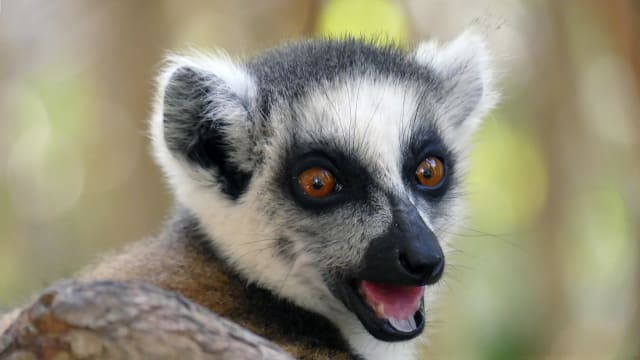
Discover Andasibe National Park (also known as Perinet) and its wildlife on a four-hour walk. Expert trackers work with our leader to provide the best opportunities for wildlife viewing. The park is home to the teddy bear-like indri, the largest of the lemur species in Madagascar, as well as other flora and fauna and a wide array of birdlife. Listening to the piercing yet melancholy cry of the indri in the morning is an evocative sound and for those who are prepared to follow them through the thick rainforest, the reward is often a close-up view of these beautiful creatures. A group of five diademed sifaka has recently been reintroduced to Andasibe from Mantadia; if we are lucky, we may spot one of these unusual creatures.
In the afternoon, we visit the Vondron’olona Miaro Mitia Ala Reserve, a community-run reserve where we can see several species of lemurs and birds. The reserve is an untouched paradise for endemic animals and plants. There are groups of indris, which we hope to see in their natural habitat, and their white-headed relatives, the diademed sifakas, jump between the treetops. For reptiles and amphibian lovers, the reserve is home to countless frogs along the crystal-clear river and several amazing chameleons live in the forest.
Accommodation: Hotel Feon’ny Ala (or similar)
Day 4: Return to Antananarivo; continue to Antsirabe
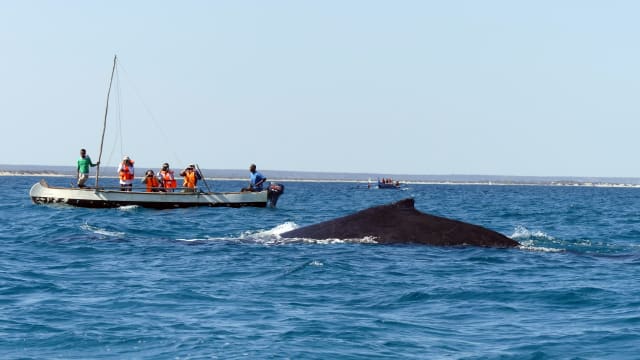
We drive back to Tana, and head south to Antsirabe, across the highland landscape of beautiful rice fields. The spectacular eroded hills called lavaka remind us of the Far East with rice fields and a green landscape or vegetables and fruit trees.
Antsirabe, or the Place of Salt, is a city known as the centre of the beer industry. Founded by Norwegians in 1856, it is the only place in Madagascar that really feels and looks like a European city. It has a temperate climate and all fruits and vegetable that grow in cold climates are found here.
Accommodation: Les Chambres du Voyageur (or similar)
Day 5: To Ranomafana
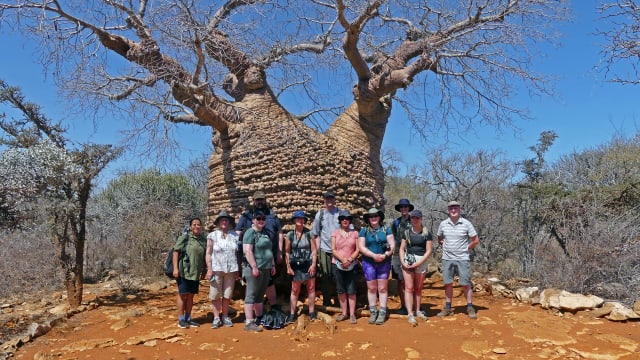
After breakfast, we drive for approximately 12 hours to Ambositra, the centre of the wood-carving industry in Madagascar. We are still in the highlands, where the houses are decorated with ornately carved wooden balconies and brightly coloured shutters. Further on we pass le col de tapia, a type of tree resistant to the bush fires of the area. The landscape is still dominated by rice fields, pine forests and eucalyptus trees, and rocky mountains. Our destination for the day: Ranomafana National Park.
Accommodation: Centrest Hotel (or similar)
Day 6: Full day in Ranomafana National Park
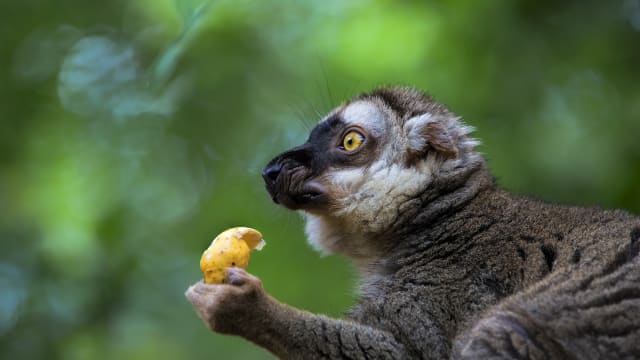
Parc National de Ranomafana, with rainforest hills and abundant wildlife, has long been considered one of the highlights in Madagascar, and is one of the most heavily visited national parks here. The entrance is about 4mi (7km) from Ranomafana village, while altitudes in the park range from 2,625ft to 3,940ft (800m to 1,200m). In addition to densely forested hills, the terrain here is characterised by numerous small streams, which plummet down to the beautiful Namorona River. Although much of the region has been logged, the easternmost part of the park retains relatively large areas of primary forest.
We walk in the park for approximately five hours looking for lemurs, chameleons and other animals. As we track the wildlife for the best viewing opportunities, the walk has the potential to be challenging if we need to walk at a quick pace through the forest. We hope to see golden bamboo lemurs, which are unique to this park, plus other lemurs such as eastern woolly lemurs, red-bellied lemurs, grey bamboo lemurs, and red-fronted brown lemurs. This park is also home to other mammals including tenrecs, bats and carnivores such as mongooses and the Malagasy striped civets.
Accommodation: Centrest Hotel (or similar)
Day 7: Drive to Ranohira, visiting Anja National Park en route
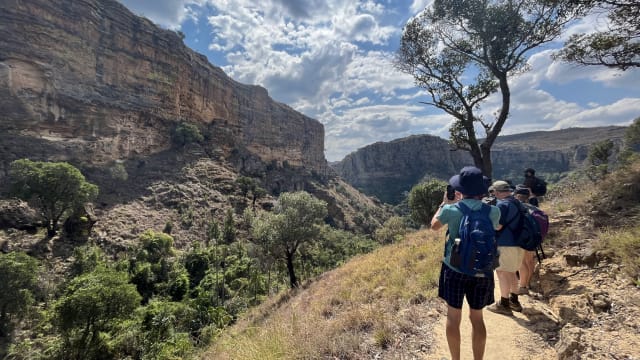
We have an early start as we leave Ranomafana National Park. The scenery changes dramatically as we head to the small town of Ranohira, a journey of approximately nine hours. We stop near Ambalavao to visit Anja National Park along the way, a small reserve where several families of ring-tailed lemurs can be seen among the vegetation.
Accommodation: Orchidee de l’Isalo (or similar)
Day 8: Full-day trek in Isalo National Park visiting Monkey Canyon and natural swimming pools
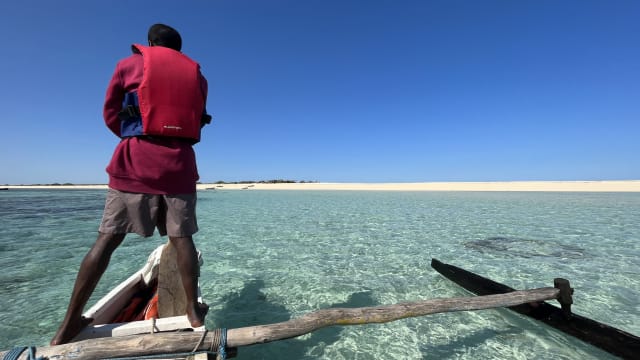
After an early start, we spend our day exploring Isalo National Park, a vast region of wind-polished and water-scoured rock towers, deep canyons, gorges and oases often described as Eden. If the conditions are right, we walk in the magnificent Canyon des Makis in search of cheeky ring-tailed lemurs and the Verreaux's sifaka. We also visit the Piscine Naturelle (Natural Swimming Pool), a beautifully lush spot in such an arid landscape where we can swim and relax. The combination of coloured rock formations, strange plants and enveloping silence make this one of the most captivating places in Madagascar.
Accommodation: Orchidee de l’Isalo (or similar)
Day 9: To Tulear, visiting Zombitse National Park en route
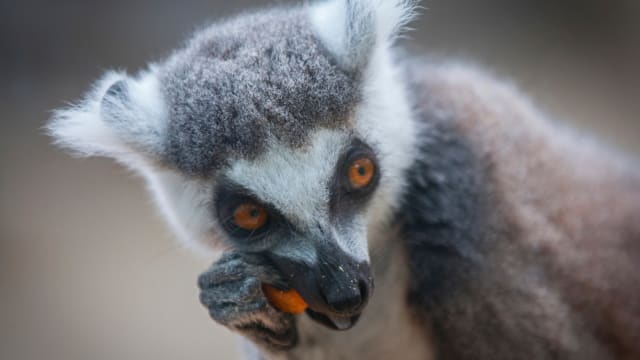
After breakfast, we continue to Tulear. This brings us new scenery, among the dry forests of the west and the spiny desert of the south. On the way, admire the different Mahafaly tombs and the Antandroy tombs from the road and visit Zombitse National Park for a few hours. The Zombitse National Park forest is of particular interest to birdwatchers, as it is home to one of Madagascar's rarest endemics, Appert's greenbul, as well as other species such as giant coua, crested ibis and cuckoo roller. Verreaux's sifakas, red-fronted brown lemurs and sportive lemurs are also seen here.
Accommodation: Hotel Victory (or similar)
Day 10: Boat transfer to Anakao; free day for optional activities
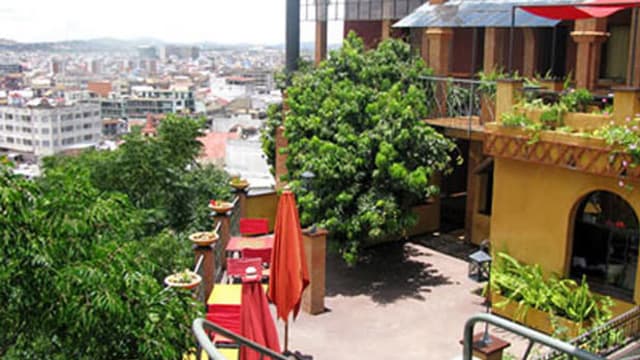
This morning, we take a boat transfer to Anakao arriving at around 9am. This Vezo (meaning the people who fish) fishing village lies on the southwest coast of Madagascar and has white-sand beaches. The rest of the day is free for optional activities, including snorkelling, diving, pirogue (a small boat similar to a canoe) excursions, swimming and more.
Accommodation: : Prince Anakao (or similar)
Day 11: Full day in Tsimanampetsotsa National Park
An early 4x4 transfer (approximately two hours) takes us to Tsimanampetsotsa for a full day in the national park. A large, shallow soda lake is the standout feature here, while a large limestone plateau has some of the most striking spiny forest vegetation in Madagascar with countless endemic species. The park sits on a large underground aquifer that runs north, evidenced by numerous sinkholes and caves. The lake is renowned for its waterfowl, notably flamingos and other rare endemic birds including the Madagascar plover. We may even be lucky and spot the emblem of the park, the very rare Grandidier’s mongoose. In the late afternoon, we return to Anakao.
Accommodation: : Prince Anakao (or similar)
Day 12: Excursion to Nosy Ve to see red-tailed tropic birds nesting on this small island
Today, we take a boat excursion to the small island of Nosy Ve to see red-tailed tropic birds (white seabirds with red bills and long, thin, red tails). If we are lucky, we may see the females roosting under small shrubs, well hidden from airborne predators such as hawks or eagles. A stroll around the shoreline, including a long white-sand beach, takes about one hour. After our exploration, we return to Anakao, usually around lunchtime. The rest of the afternoon is free for optional activities.
Accommodation: : Prince Anakao (or similar)
Day 13: Fly to Antananarivo
Today, we transfer to Tulear airport for our flight to Antananarivo. Depending on the flight schedule, you may have free time in the afternoon to explore Tana on your own.
Accommodation: Belvedere Hotel (or similar)
Day 14: Visit to Ambohimanga; end Antananarivo
This morning we visit Ambohimanga, the fortified village and its royal palace. Ambohimanga, otherwise known as Blue Hills, was for a long time forbidden to Europeans. The kings and queens returned to this hilltop village for rest and relaxation. From here began the line of kings and queens who united Madagascar into one country. Ambohimanga remains spiritually significant for the Malagasy people with ceremonies and rituals still taking place. Our adventure ends after Ambohimanga.
Please note: Clients must not book flights leaving before 2.30pm.
Partner Details

Exodus Travel
In Business Since 1974
It’s all about adventure
That is what Exodus was founded upon 50 years ago, and what the company is still all about. Discovering countries, cultures, environments, cities, mountain ranges, deserts, coasts and jungles; exploring this amazing planet we all live on.
At Exodus, we know what makes you tick when it comes to holidays. It’s a desire shared by so many others. A yearning to visit new places and come home with a real sense of what they’re all about. This means delving into local traditions, cultures, cuisine, lifestyles – anything that contributes to its unique identity. At the same time, we always remember that we are only guests. So we travel courteously and respectfully, in smaller groups to minimise our impact, to ensure that every Exodus holiday is a beneficial experience for everyone involved.
This is a philosophy we take with us around the world, helping you reach some incredible destinations on 500 itineraries across over 90 separate countries. We also strive to provide as much flexibility and choice as we possibly can, making it simple for you to experience a very different holiday.
Exodus started life on 4 February 1974 when two friends got together to provide an overland truck to travel to the Minaret of Jam, deep in the heart of the Hindu Kush, the most inaccessible of the world’s great monuments. See our history page for more details about how we began and how we have grown over the past 50 years.
Never travelled with Exodus before? Visit our New to Exodus page for some useful, first-timer information.












Book By {{det.BookBy}}



















 Our adventure starts in Antananarivo, the picturesque capital of Madagascar, which is often shortened to Tana. There will be a group meeting and briefing in the evening followed by an optional group dinner for those who would like to join.
Accommodation: Hotel Belvedere (or similar)
Our adventure starts in Antananarivo, the picturesque capital of Madagascar, which is often shortened to Tana. There will be a group meeting and briefing in the evening followed by an optional group dinner for those who would like to join.
Accommodation: Hotel Belvedere (or similar)  This morning, we embark on a city tour of the capital. With busy markets, friendly people and an ancient town on a hill with freestone churches and ancient royal places, it is a magnificent place to explore. We then drive to Andasibe through the green vegetation of the east. This first stop brings us to the humid part of the country with many primary forests and lakes. Along the way, we see Merina villages in the rocky mountains. We arrive in Andasibe around 4pm and the rest of the afternoon is free to relax. In the early evening, we take a twilight/nocturnal walk along the road, close to the Andasibe Nature Reserve, looking for the nocturnal species of lemur as the torchlights pass their eyes.
Accommodation: Hotel Feon’ny Ala (or similar)
This morning, we embark on a city tour of the capital. With busy markets, friendly people and an ancient town on a hill with freestone churches and ancient royal places, it is a magnificent place to explore. We then drive to Andasibe through the green vegetation of the east. This first stop brings us to the humid part of the country with many primary forests and lakes. Along the way, we see Merina villages in the rocky mountains. We arrive in Andasibe around 4pm and the rest of the afternoon is free to relax. In the early evening, we take a twilight/nocturnal walk along the road, close to the Andasibe Nature Reserve, looking for the nocturnal species of lemur as the torchlights pass their eyes.
Accommodation: Hotel Feon’ny Ala (or similar)  Discover Andasibe National Park (also known as Perinet) and its wildlife on a four-hour walk. Expert trackers work with our leader to provide the best opportunities for wildlife viewing. The park is home to the teddy bear-like indri, the largest of the lemur species in Madagascar, as well as other flora and fauna and a wide array of birdlife. Listening to the piercing yet melancholy cry of the indri in the morning is an evocative sound and for those who are prepared to follow them through the thick rainforest, the reward is often a close-up view of these beautiful creatures. A group of five diademed sifaka has recently been reintroduced to Andasibe from Mantadia; if we are lucky, we may spot one of these unusual creatures.
In the afternoon, we visit the Vondron’olona Miaro Mitia Ala Reserve, a community-run reserve where we can see several species of lemurs and birds. The reserve is an untouched paradise for endemic animals and plants. There are groups of indris, which we hope to see in their natural habitat, and their white-headed relatives, the diademed sifakas, jump between the treetops. For reptiles and amphibian lovers, the reserve is home to countless frogs along the crystal-clear river and several amazing chameleons live in the forest.
Accommodation: Hotel Feon’ny Ala (or similar)
Discover Andasibe National Park (also known as Perinet) and its wildlife on a four-hour walk. Expert trackers work with our leader to provide the best opportunities for wildlife viewing. The park is home to the teddy bear-like indri, the largest of the lemur species in Madagascar, as well as other flora and fauna and a wide array of birdlife. Listening to the piercing yet melancholy cry of the indri in the morning is an evocative sound and for those who are prepared to follow them through the thick rainforest, the reward is often a close-up view of these beautiful creatures. A group of five diademed sifaka has recently been reintroduced to Andasibe from Mantadia; if we are lucky, we may spot one of these unusual creatures.
In the afternoon, we visit the Vondron’olona Miaro Mitia Ala Reserve, a community-run reserve where we can see several species of lemurs and birds. The reserve is an untouched paradise for endemic animals and plants. There are groups of indris, which we hope to see in their natural habitat, and their white-headed relatives, the diademed sifakas, jump between the treetops. For reptiles and amphibian lovers, the reserve is home to countless frogs along the crystal-clear river and several amazing chameleons live in the forest.
Accommodation: Hotel Feon’ny Ala (or similar)  We drive back to Tana, and head south to Antsirabe, across the highland landscape of beautiful rice fields. The spectacular eroded hills called lavaka remind us of the Far East with rice fields and a green landscape or vegetables and fruit trees.
Antsirabe, or the Place of Salt, is a city known as the centre of the beer industry. Founded by Norwegians in 1856, it is the only place in Madagascar that really feels and looks like a European city. It has a temperate climate and all fruits and vegetable that grow in cold climates are found here.
Accommodation: Les Chambres du Voyageur (or similar)
We drive back to Tana, and head south to Antsirabe, across the highland landscape of beautiful rice fields. The spectacular eroded hills called lavaka remind us of the Far East with rice fields and a green landscape or vegetables and fruit trees.
Antsirabe, or the Place of Salt, is a city known as the centre of the beer industry. Founded by Norwegians in 1856, it is the only place in Madagascar that really feels and looks like a European city. It has a temperate climate and all fruits and vegetable that grow in cold climates are found here.
Accommodation: Les Chambres du Voyageur (or similar)  After breakfast, we drive for approximately 12 hours to Ambositra, the centre of the wood-carving industry in Madagascar. We are still in the highlands, where the houses are decorated with ornately carved wooden balconies and brightly coloured shutters. Further on we pass le col de tapia, a type of tree resistant to the bush fires of the area. The landscape is still dominated by rice fields, pine forests and eucalyptus trees, and rocky mountains. Our destination for the day: Ranomafana National Park.
Accommodation: Centrest Hotel (or similar)
After breakfast, we drive for approximately 12 hours to Ambositra, the centre of the wood-carving industry in Madagascar. We are still in the highlands, where the houses are decorated with ornately carved wooden balconies and brightly coloured shutters. Further on we pass le col de tapia, a type of tree resistant to the bush fires of the area. The landscape is still dominated by rice fields, pine forests and eucalyptus trees, and rocky mountains. Our destination for the day: Ranomafana National Park.
Accommodation: Centrest Hotel (or similar)  Parc National de Ranomafana, with rainforest hills and abundant wildlife, has long been considered one of the highlights in Madagascar, and is one of the most heavily visited national parks here. The entrance is about 4mi (7km) from Ranomafana village, while altitudes in the park range from 2,625ft to 3,940ft (800m to 1,200m). In addition to densely forested hills, the terrain here is characterised by numerous small streams, which plummet down to the beautiful Namorona River. Although much of the region has been logged, the easternmost part of the park retains relatively large areas of primary forest.
We walk in the park for approximately five hours looking for lemurs, chameleons and other animals. As we track the wildlife for the best viewing opportunities, the walk has the potential to be challenging if we need to walk at a quick pace through the forest. We hope to see golden bamboo lemurs, which are unique to this park, plus other lemurs such as eastern woolly lemurs, red-bellied lemurs, grey bamboo lemurs, and red-fronted brown lemurs. This park is also home to other mammals including tenrecs, bats and carnivores such as mongooses and the Malagasy striped civets.
Accommodation: Centrest Hotel (or similar)
Parc National de Ranomafana, with rainforest hills and abundant wildlife, has long been considered one of the highlights in Madagascar, and is one of the most heavily visited national parks here. The entrance is about 4mi (7km) from Ranomafana village, while altitudes in the park range from 2,625ft to 3,940ft (800m to 1,200m). In addition to densely forested hills, the terrain here is characterised by numerous small streams, which plummet down to the beautiful Namorona River. Although much of the region has been logged, the easternmost part of the park retains relatively large areas of primary forest.
We walk in the park for approximately five hours looking for lemurs, chameleons and other animals. As we track the wildlife for the best viewing opportunities, the walk has the potential to be challenging if we need to walk at a quick pace through the forest. We hope to see golden bamboo lemurs, which are unique to this park, plus other lemurs such as eastern woolly lemurs, red-bellied lemurs, grey bamboo lemurs, and red-fronted brown lemurs. This park is also home to other mammals including tenrecs, bats and carnivores such as mongooses and the Malagasy striped civets.
Accommodation: Centrest Hotel (or similar)  We have an early start as we leave Ranomafana National Park. The scenery changes dramatically as we head to the small town of Ranohira, a journey of approximately nine hours. We stop near Ambalavao to visit Anja National Park along the way, a small reserve where several families of ring-tailed lemurs can be seen among the vegetation.
Accommodation: Orchidee de l’Isalo (or similar)
We have an early start as we leave Ranomafana National Park. The scenery changes dramatically as we head to the small town of Ranohira, a journey of approximately nine hours. We stop near Ambalavao to visit Anja National Park along the way, a small reserve where several families of ring-tailed lemurs can be seen among the vegetation.
Accommodation: Orchidee de l’Isalo (or similar)  After an early start, we spend our day exploring Isalo National Park, a vast region of wind-polished and water-scoured rock towers, deep canyons, gorges and oases often described as Eden. If the conditions are right, we walk in the magnificent Canyon des Makis in search of cheeky ring-tailed lemurs and the Verreaux's sifaka. We also visit the Piscine Naturelle (Natural Swimming Pool), a beautifully lush spot in such an arid landscape where we can swim and relax. The combination of coloured rock formations, strange plants and enveloping silence make this one of the most captivating places in Madagascar.
Accommodation: Orchidee de l’Isalo (or similar)
After an early start, we spend our day exploring Isalo National Park, a vast region of wind-polished and water-scoured rock towers, deep canyons, gorges and oases often described as Eden. If the conditions are right, we walk in the magnificent Canyon des Makis in search of cheeky ring-tailed lemurs and the Verreaux's sifaka. We also visit the Piscine Naturelle (Natural Swimming Pool), a beautifully lush spot in such an arid landscape where we can swim and relax. The combination of coloured rock formations, strange plants and enveloping silence make this one of the most captivating places in Madagascar.
Accommodation: Orchidee de l’Isalo (or similar)  After breakfast, we continue to Tulear. This brings us new scenery, among the dry forests of the west and the spiny desert of the south. On the way, admire the different Mahafaly tombs and the Antandroy tombs from the road and visit Zombitse National Park for a few hours. The Zombitse National Park forest is of particular interest to birdwatchers, as it is home to one of Madagascar's rarest endemics, Appert's greenbul, as well as other species such as giant coua, crested ibis and cuckoo roller. Verreaux's sifakas, red-fronted brown lemurs and sportive lemurs are also seen here.
Accommodation: Hotel Victory (or similar)
After breakfast, we continue to Tulear. This brings us new scenery, among the dry forests of the west and the spiny desert of the south. On the way, admire the different Mahafaly tombs and the Antandroy tombs from the road and visit Zombitse National Park for a few hours. The Zombitse National Park forest is of particular interest to birdwatchers, as it is home to one of Madagascar's rarest endemics, Appert's greenbul, as well as other species such as giant coua, crested ibis and cuckoo roller. Verreaux's sifakas, red-fronted brown lemurs and sportive lemurs are also seen here.
Accommodation: Hotel Victory (or similar)  This morning, we take a boat transfer to Anakao arriving at around 9am. This Vezo (meaning the people who fish) fishing village lies on the southwest coast of Madagascar and has white-sand beaches. The rest of the day is free for optional activities, including snorkelling, diving, pirogue (a small boat similar to a canoe) excursions, swimming and more.
Accommodation: : Prince Anakao (or similar)
This morning, we take a boat transfer to Anakao arriving at around 9am. This Vezo (meaning the people who fish) fishing village lies on the southwest coast of Madagascar and has white-sand beaches. The rest of the day is free for optional activities, including snorkelling, diving, pirogue (a small boat similar to a canoe) excursions, swimming and more.
Accommodation: : Prince Anakao (or similar) 


















